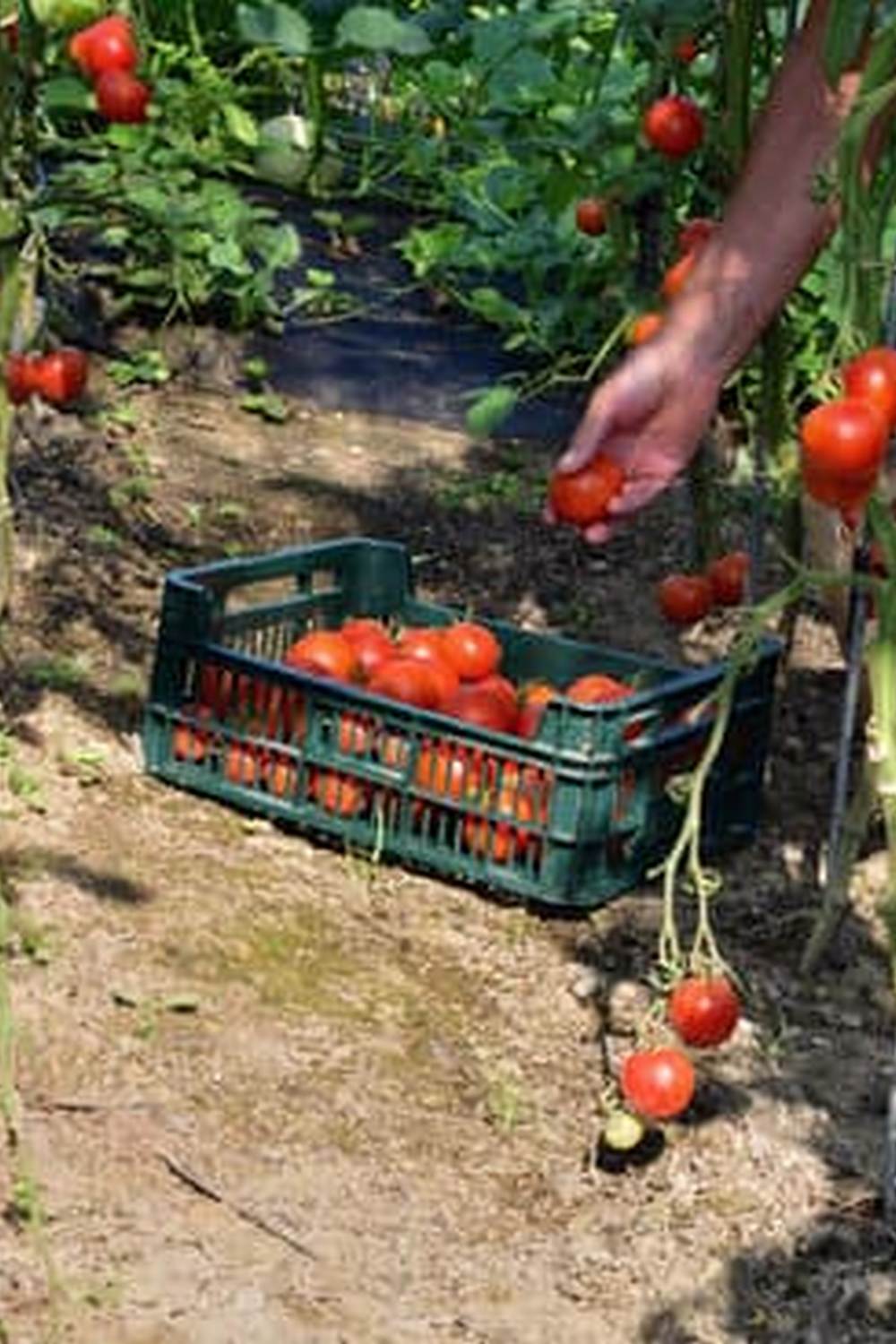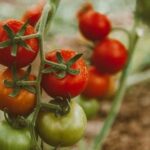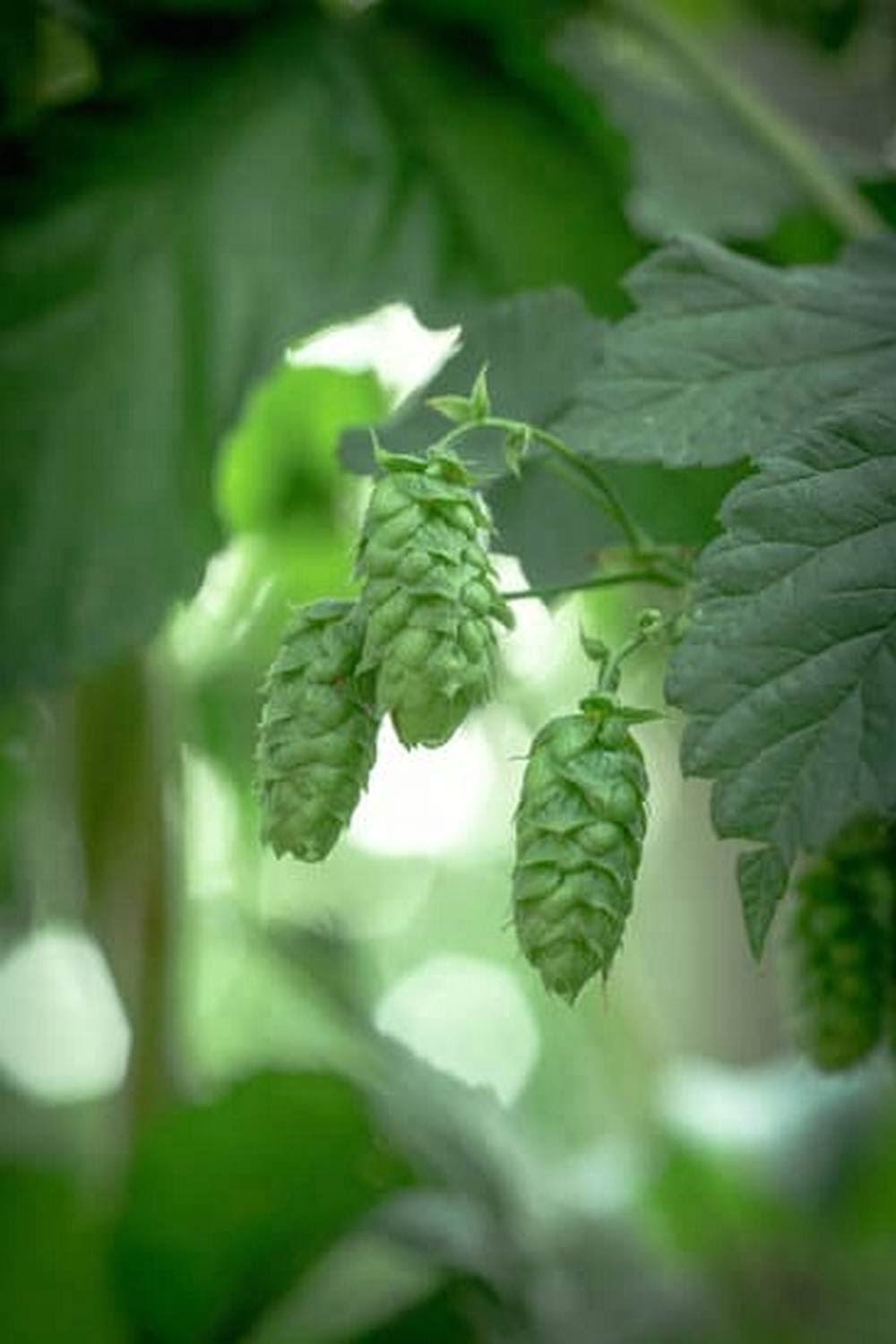The tradition of vegetable gardening in New England has deep roots in the region’s rich agricultural history. From colonial times to the present day, growing vegetables at home has been a vital practice for many residents. Whether it be for self-sufficiency, community building, or simply the joy of cultivating fresh produce, vegetable gardens are a cherished part of New England culture.
With its unique climate and growing conditions, New England presents both challenges and opportunities for vegetable gardeners. From the rocky soil of Maine to the sandy shores of Cape Cod, each region offers its own set of possibilities for cultivating a bountiful harvest. Understanding the best vegetables to grow in New England’s climate is essential for success, as different crops thrive in varying conditions throughout the region.
In this article, we will delve into the world of vegetable gardening in New England, exploring seasonal planting guides, tips for setting up a successful garden, common pests and diseases to watch out for, ways to extend the growing season, inspiring success stories from local gardeners, sustainable practices, and valuable resources for those looking to embark on their own gardening journey. Let’s uncover the secrets of thriving vegetable gardens in this historic corner of the United States.
The Best Vegetables to Grow in New England Climate
When it comes to vegetable gardens in New England, it is important to choose the right crops that can thrive in the region’s unique climate. From the cold winters to the short growing season, selecting vegetables that are well-suited for New England’s conditions is key to a successful harvest. Here are some of the best vegetables to grow in New England:
- Tomatoes: Tomatoes are a popular choice for New England gardens, as they can be grown successfully with proper care and attention. Varieties like Early Girl and Brandywine are known to do well in this region.
- Zucchini: Zucchini thrives in the warm summers of New England and is a versatile vegetable that can be used in various dishes. This prolific plant is easy to grow and produces an abundant harvest.
- Carrots: Carrots are root vegetables that do well in the cool weather of New England. Varieties like Danvers Half Long and Rainbow Carrots are great options for local gardeners.
In addition to these vegetables, other great options for vegetable gardens in New England include leafy greens like lettuce and spinach, root crops such as potatoes and beets, and herbs like basil and parsley. Choosing a variety of vegetables will not only provide a diverse harvest but also help with crop rotation and soil health in your garden.
When planning your vegetable garden in New England, consider factors such as sunlight exposure, soil quality, and frost dates to ensure that your chosen vegetables have the best chance of thriving. By selecting the right crops for the region’s climate and following best practices for care and maintenance, you can enjoy a bountiful harvest from your very own garden.
Seasonal Planting Guide for Vegetable Gardens in New England
New England’s diverse climate presents a unique set of challenges and opportunities for vegetable gardeners. With four distinct seasons, it is essential to plan your planting schedule carefully to maximize your harvest throughout the year. Here is a seasonal planting guide to help you make the most out of your vegetable garden in New England.
Spring
In early spring, as soon as the ground thaws and temperatures begin to rise, it’s time to start planting cold-hardy vegetables in your New England garden. Vegetables like peas, spinach, lettuce, radishes, and carrots thrive in cooler temperatures. Be sure to prepare your soil by adding compost or fertilizer to provide nutrients for healthy plant growth.
Summer
As the weather warms up in New England, summer offers a wide range of vegetables that love the heat. Tomatoes, peppers, cucumbers, zucchini, and beans are popular choices for summer planting. Make sure to water regularly during hot spells and mulch around plants to retain moisture in the soil. Consider succession planting for continuous harvests throughout the season.
Fall
In the fall, you can extend your growing season by planting cool-weather crops that can withstand light frosts. Vegetables like kale, Brussels sprouts, broccoli, cauliflower, and beets are ideal for fall harvesting in New England. Protect tender plants from frost with row covers or cold frames. Take advantage of this second growing season before winter sets in.
By following this seasonal planting guide tailored specifically for vegetable gardens in New England, you can enjoy a bountiful harvest year-round. Remember to adjust your planting schedule based on your specific location within New England as microclimates can vary significantly across the region. Happy gardening.
Tips for Setting Up a Successful Vegetable Garden in New England
When setting up a successful vegetable garden in New England, there are several important factors to consider to ensure a bountiful harvest. First and foremost, it is crucial to choose the right location for your garden. Select a spot that receives at least 6-8 hours of sunlight per day and has well-draining soil. Raised beds can be a great option for New England vegetable gardens, especially if the soil in your area is heavy or compacted.
Another vital aspect of setting up a successful vegetable garden in New England is proper soil preparation. Conduct a soil test to determine its pH levels and nutrient content. Based on the results, amend the soil with organic matter such as compost or aged manure to improve its fertility. Additionally, consider using mulch to retain moisture, suppress weeds, and regulate soil temperature in your vegetable garden.
Furthermore, choosing the right vegetables to grow in your climate is key to success. In New England, cool-season crops like lettuce, broccoli, carrots, and peas thrive in the spring and fall months. Warm-season crops such as tomatoes, peppers, squash, and cucumbers do well during the summer months.
Rotate your crops each year to prevent disease build-up and improve soil health in your vegetable garden. By following these tips and strategies for setting up your vegetable garden in New England, you can enjoy a productive growing season filled with fresh produce right at your fingertips.
Common Pests and Diseases to Watch Out for in New England Vegetable Gardens
Common Pests in New England Vegetable Gardens
One of the challenges that vegetable gardeners in New England face is dealing with common pests that can wreak havoc on their crops. Some of the most prevalent pests in the region include aphids, cabbage worms, squash bugs, and tomato hornworms. These pests can quickly multiply and cause significant damage to vegetables if not properly managed.
To control aphids and cabbage worms, consider introducing beneficial insects like ladybugs or releasing natural predators such as parasitic wasps. Physical barriers like row covers can also help protect your plants from these pests. Squash bugs can be hand-picked off plants or controlled using insecticidal soap. Regularly inspecting your plants for signs of these pests and taking proactive measures can help prevent them from causing widespread damage to your vegetable garden.
Common Diseases in New England Vegetable Gardens
In addition to pests, vegetable gardeners in New England must also watch out for common diseases that can affect their crops. Some of the most prominent diseases in the region include powdery mildew, late blight, and verticillium wilt. These fungal infections can quickly spread from plant to plant if not managed effectively.
To prevent powdery mildew, ensure proper air circulation around your plants by spacing them adequately. Remove and destroy infected plant parts to prevent the disease from spreading. Late blight is a particularly severe disease that affects tomatoes and potatoes; it thrives in cool, wet conditions.
To manage late blight, avoid overhead watering and apply fungicides preventatively. Verticillium wilt affects a wide range of vegetable crops and can persist in the soil for years. Choosing resistant varieties and practicing crop rotation can help reduce the risk of this disease affecting your vegetable garden.
Tips for Disease Prevention
Implementing good cultural practices can go a long way in preventing both pest infestations and disease outbreaks in your New England vegetable garden. Provide adequate sunlight, water plants at the base to avoid spreading diseases through splashing water, and practice crop rotation to minimize soil-borne pathogens’ buildup. Regularly inspecting your plants for any signs of pests or diseases allows for early intervention, increasing your chances of a successful harvest from your vegetable garden in New England.
How to Extend the Growing Season in New England Vegetable Gardens
Extending the growing season in vegetable gardens in New England can be a rewarding challenge for gardeners looking to make the most out of their harvest. With the region’s short summers and early frosts, it is essential to utilize techniques that can help prolong the growing period and maximize yields.
One effective method to extend the growing season is by using cold frames or hoop houses. These structures act as mini greenhouses, providing plants with protection from frost and harsh weather conditions, allowing them to thrive well into the fall season.
Another technique that can be employed to extend the growing season in New England vegetable gardens is succession planting. By staggering planting times and sowing seeds of quick-growing crops throughout the summer months, gardeners can ensure a continuous harvest well into the fall. This method not only extends the growing season but also maximizes space utilization in the garden, allowing for a more diverse range of vegetables to be grown.
Furthermore, utilizing row covers or mulching can also help extend the growing season by providing additional insulation and warmth for plants during cooler temperatures. These practices help create a microclimate that promotes plant growth and protects against sudden drops in temperature. By implementing these strategies and being proactive in monitoring weather forecasts, New England gardeners can successfully extend their growing seasons and enjoy a bountiful harvest of fresh produce well beyond the typical summer months.
| Techniques | Benefits |
|---|---|
| Cold Frames/Hoop Houses | Protection from frost and harsh weather conditions, extended growing period |
| Succession Planting | Continuous harvest throughout summer and fall, maximized space utilization |
| Row Covers/Mulching | Additional insulation, microclimate creation, protection against temperature fluctuations |
Success Stories
Venturing into the world of vegetable gardening in New England can be a rewarding experience, as many individuals have successfully cultivated thriving gardens in this region. Whether it’s seasoned gardeners passing down their knowledge through generations or newcomers embracing the art of growing their own produce, there are numerous success stories that showcase the beauty and bounty of vegetable gardens in New England.
Here are a few inspiring tales from vegetable gardeners in New England:
- One family in Vermont transformed their backyard into a lush vegetable paradise, complete with raised beds overflowing with a variety of crops. From juicy tomatoes to vibrant bell peppers, their garden not only provides fresh produce for their meals but also serves as a gathering place for friends and family.
- In Massachusetts, a group of neighbors came together to create a community vegetable garden in an empty lot. What started as a small patch of dirt soon blossomed into a vibrant space filled with rows of vegetables and herbs. The sense of camaraderie and shared abundance among the gardeners has truly brought the neighborhood closer together.
- A retiree in Maine decided to pursue his passion for gardening by converting part of his property into an expansive vegetable garden. Despite being new to gardening, he dedicated time to research, experiment, and learn from local experts. Today, his bountiful harvests serve as an inspiration to others looking to start their own vegetable gardens.
These success stories serve as testaments to the endless possibilities and joys that come with cultivating vegetable gardens in New England. From small backyard plots to community initiatives, these tales showcase the resilience, creativity, and dedication of individuals who have embraced the tradition of growing their own food.
The Importance of Sustainable Practices in New England Vegetable Gardening
New England vegetable gardens have a rich tradition that dates back to the region’s early agricultural history. As the interest in sustainable and environmentally-friendly practices continues to grow, more gardeners in New England are embracing sustainable methods to cultivate their vegetable plots. Sustainable gardening in this region involves practices that minimize negative impacts on the environment, conserve natural resources, and support biodiversity.
One key aspect of sustainable gardening in New England is soil health. Using organic fertilizers, composting kitchen scraps, and rotating crops can help maintain the fertility of the soil over time. Additionally, choosing native plants and varieties that are well-suited to the local climate can reduce the need for excess water, pesticides, and fertilizers. By nurturing healthy soil and selecting appropriate plant species, gardeners can create a thriving ecosystem in their vegetable gardens.
Another important practice for sustainable vegetable gardening in New England is water conservation. The region experiences variable weather patterns throughout the year, including periods of drought. Implementing strategies like rainwater harvesting, drip irrigation systems, and mulching can help reduce water usage in vegetable gardens. By using water efficiently and avoiding wastage, gardeners can contribute to conserving this precious resource while still enjoying a productive harvest from their vegetable gardens.
| Sustainable Practices | Benefits |
|---|---|
| Organic fertilizers and composting | Improves soil fertility |
| Native plants selection | Reduces need for pesticides |
| Water conservation techniques | Minimizes water usage |
Resources for New England Vegetable Gardeners
When it comes to cultivating vegetable gardens in New England, having access to the right resources can make a significant difference in the success of your garden. Local nurseries play a crucial role in providing gardeners with high-quality seeds, seedlings, tools, and expert advice tailored to the unique climate and conditions of the region.
Whether you’re a beginner or an experienced gardener, visiting a local nursery can help you choose the best varieties of vegetables that thrive in New England’s soil and weather.
Community gardens are another valuable resource for vegetable gardeners in New England. These shared gardening spaces provide opportunities for individuals to grow their own produce while fostering a sense of community and collaboration.
In addition to access to land and water, community gardens offer a supportive environment where gardeners can exchange knowledge, share resources, and connect with like-minded individuals who share a passion for sustainable gardening practices. Participating in a community garden can also be a great way to learn from experienced gardeners and enhance your skills through hands-on experience.
Lastly, attending events such as workshops, seminars, farmers markets, and plant sales can further enrich your vegetable gardening experience in New England. These events provide opportunities to learn about new techniques, discover innovative products, connect with local gardening experts, and network with other vegetable gardeners in the region. By staying informed about upcoming events in your area, you can stay inspired, expand your knowledge base, and stay connected with the vibrant gardening community in New England.
Conclusion
In conclusion, the tradition of vegetable gardening in New England runs deep, with a rich agricultural history that continues to inspire many gardeners in the region. From the early settlers who relied on their vegetable gardens for sustenance to the modern-day enthusiasts who embrace sustainable practices, vegetable gardening in New England is more than just a hobby – it is a way of life.
The diverse climate of the region may present challenges, but with careful planning, the right choice of vegetables, and dedication, anyone can create a thriving garden in their backyard.
As we reflect on the best vegetables to grow in the New England climate and the seasonal planting guide provided, it becomes clear that there is a wide variety of options for gardeners to explore. Whether it’s hearty root vegetables like potatoes and carrots or delicate greens like lettuce and spinach, there is something for everyone to cultivate in their own vegetable gardens in New England.
By following the tips for setting up a successful garden and being vigilant against common pests and diseases, gardeners can ensure a bountiful harvest year after year.
Moreover, as we look towards success stories of inspiring vegetable gardens in New England and learn how to extend the growing season through innovative techniques, it becomes evident that this region holds immense potential for flourishing vegetable gardens. By embracing sustainable practices and supporting local nurseries, community gardens, and events dedicated to vegetable gardening, we can contribute to preserving this rich agricultural history for generations to come.
Let us continue to nurture our vegetable gardens in New England with care and passion, honoring the land that provides us with nourishment and abundance.
Frequently Asked Questions
What Are the Best Vegetables to Grow in New England?
The best vegetables to grow in New England include cold-tolerant varieties like kale, broccoli, carrots, beets, and Brussels sprouts. These vegetables thrive in the region’s cool climate and can withstand frost.
When Should I Start a Vegetable Garden in New England?
In New England, it is recommended to start a vegetable garden in late spring around mid-May when the soil has warmed up enough for planting. This timing allows for a longer growing season before the colder fall weather sets in.
How Do You Grow Vegetables in the Winter in New England?
Growing vegetables in the winter in New England requires some planning and resources. One method is to use season extenders like row covers, cold frames, or high tunnels to protect crops from frost and provide warmth.
Additionally, selecting cold-hardy vegetables such as spinach, kale, and winter squash can help ensure a successful winter harvest. Taking care to monitor soil moisture and temperature levels is essential for winter gardening success in New England.

If you’re looking to get into vegetable gardening, or are just looking for some tips on how to make your current garden better, then you’ve come to the right place! My name is Ethel and I have been gardening for years. In this blog, I’m going to share with you some of my best tips on how to create a successful vegetable garden.





